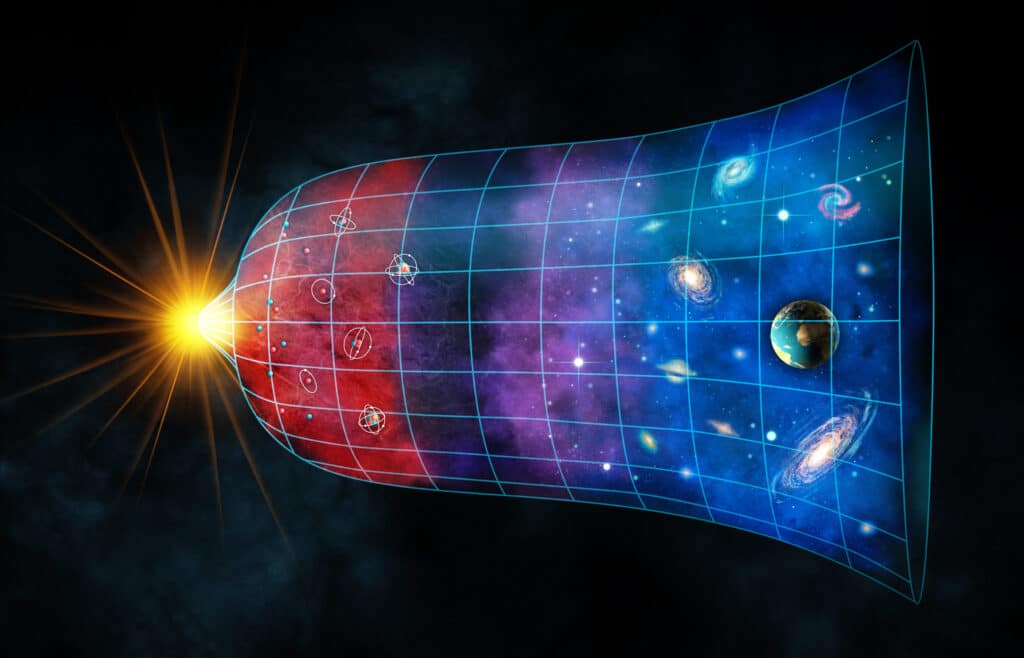The accelerating expansion of the universe has baffled scientists for decades. But a new study, published in the journal Results in Physics, suggests that the answer to this cosmic conundrum might lie in a seemingly unrelated branch of physics: thermodynamics. By drawing parallels between the behavior of the universe and the properties of everyday materials, Brazilian researchers offer a fresh perspective on one of astronomy’s greatest mysteries.
At the heart of this novel approach is a quantity called the Grüneisen parameter, denoted by the Greek letter gamma (𝛤). This parameter is a staple of condensed matter physics, used to describe how a material’s pressure and energy density change as its volume expands or contracts. Named after the early 20th-century physicist Eduard Grüneisen, 𝛤 has been studied extensively in solids and fluids — but never before in a cosmological context.
Led by physicist Mariano de Souza from São Paulo State University in Brazil, the team proposes that the Grüneisen parameter is actually hiding in plain sight in the equations governing the universe’s evolution. Specifically, they show that 𝛤 is equivalent to a quantity called the equation of state parameter, usually denoted by the letter 𝜔.
“Measurements of redshift suggest that the accelerating expansion is adiabatic [without heat transfer] and anisotropic [varying in magnitude when measured in different directions],” says de Souza in a media release. “Fundamental concepts in thermodynamics allow us to infer that adiabatic expansion is always accompanied by cooling due to the barocaloric effect [pressure-induced thermal change], which is quantified by the Grüneisen ratio [Γ, gamma].”
In cosmology, 𝜔 relates the pressure and energy density of the universe, with different values corresponding to different eras of cosmic history. In the early universe, dominated by radiation, 𝜔 equals 1/3. In the matter-dominated era that followed, 𝜔 is nearly zero. And in the current dark energy-dominated epoch, 𝜔 is close to -1.
The insight of de Souza and his colleagues is that these values of 𝜔 can be reinterpreted as the “effective” Grüneisen parameter of the universe, 𝛤_𝑒𝑓𝑓. This connection allows them to analyze the universe’s expansion using the tools of thermodynamics.
One striking result is that the negative pressure associated with dark energy — the mysterious force thought to be driving the universe’s accelerated expansion — implies a “metastable” state analogous to a superheated liquid. The team also finds that in the dark energy era, 𝛤_𝑒𝑓𝑓 (and hence 𝜔) should vary with time, supporting recent proposals of a time-dependent cosmological constant.
Perhaps most intriguingly, researchers show that the switch from a decelerating to an accelerating cosmic expansion, which occurred about 5 billion years ago, can be understood as a kind of thermodynamic phase transition. Just as a material can abruptly change its properties when heated or cooled past a critical point, the universe seems to have undergone a drastic shift in behavior as dark energy took over.
“Also in the perspective of the Grüneisen parameter, we conjecture that the shift from a decelerating expansion regime [in the radiation and matter-dominated eras] to an accelerating expansion regime [in the dark energy-dominated era] resembles a thermodynamic phase transition. This is because Γeff changes sign when the expansion changes from decelerating to accelerating. The sign change resembles the typical signature of phase transitions in condensed matter physics,” explains Souza.
The team goes on to explore how the Grüneisen parameter is linked to anisotropies, or directional variations, in the universe’s expansion. Such effects could arise from the non-uniform distribution of matter on large scales, in the form of galaxy clusters. By adapting models originally developed for glasses and other disordered materials, the researchers sketch out how these anisotropies might evolve over cosmic time.
While still speculative, the idea of using thermodynamics to understand the universe’s expansion is a compelling one. It opens up new ways of analyzing cosmological data and could potentially resolve some of the tensions in the standard model of cosmology, such as the discrepancy in measurements of the Hubble constant.
More detailed theoretical studies and comparisons with observations will be needed to fully flesh out the thermodynamic picture of cosmic expansion. But by bringing together two seemingly disparate fields — condensed matter physics and cosmology — this research offers a tantalizing glimpse of a more unified view of the physical world, from the smallest scales to the grandest.












